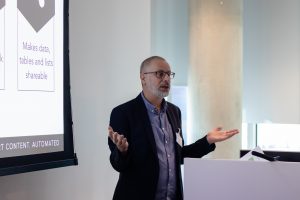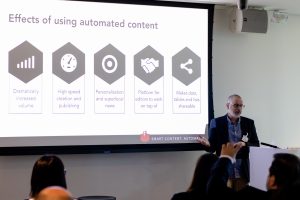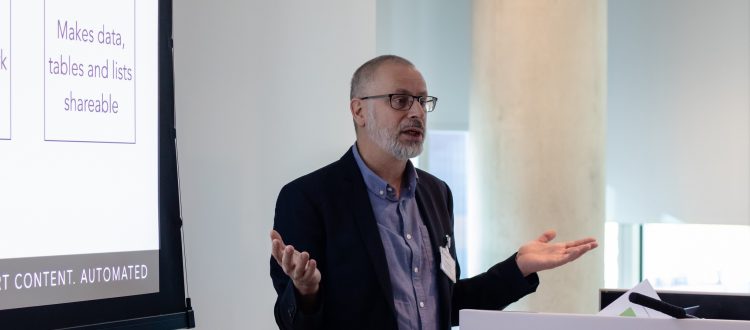Driving Audience at CNN Digital
By Anisa Holmes, City University graduate student

“News cycles come and go. There could be a weeklong dry spell in the news, so how do you level it out to bring a more predictable higher floor to your business?” asks Alan Segal, VP of Audience & Analytics at CNN Digital. Segal was a speaker at the 8th Data & AI for Media Week conference in London on 2 November. In order to drive a more predictable audience, CNN tries to build daily habits in their readership. Segal shared some examples of what works and what doesn’t.
One of the easiest ways to have a direct relationship with the audience is through a newsletter, Segal explains. But it’s not enough to just release a newsletter; without high-quality content, no one will read or engage with it. And, even with an amazing newsletter, adjusting the newsletter’s promotional messaging for the audience recipient can further optimize the experience. For example, with CNN’s highly successful ‘Five Things Newsletter’, they had several different messages to cater to both direct visitors and casual visitors.

Density of links on a homepage can also make a huge difference. CNN found that even though design aesthetics would have less links on the homepage, the higher the number of unique links, the higher the click-through rate. “If you don’t have enough things to catch the eye, they will get disinterested. They need to be able to quickly find something that resonates with them,” Segal explains.
The use of adaptive programming is another tool the Audience & Analytics team uses to build readership habits and promote constant engagement. Some examples of adaptive programming in action include recognizing those who are heavy video viewers in order to convert more audience members from leads into targets, and creating more engagement options in the interface for frequent users.
However, for Segal, these data-driven techniques are just one part of the whole package; they work hand in hand with a goal-oriented team, a culture of testing, and sound human judgment.


